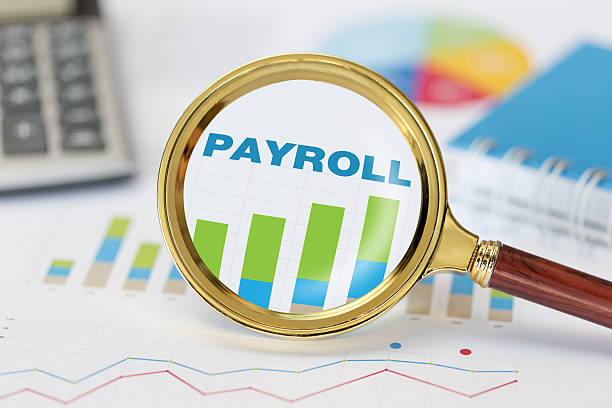It is crucial to deliver an effective onboarding experience as it sets the tone for the employee’s tenure with the company and makes a good first impression. In fact, research shows that over 90% of employees agree that effective onboarding is critical to employee retention.
Companies that have strong onboarding programs see an increase in revenue growth and profit margins compared to those with poor onboarding processes.
Additionally, these companies also tend to have higher productivity levels and faster knowledge acquisition rates among their employees. These statistics highlight the importance of creating a comprehensive and effective onboarding process to retain and engage your new hires.
What should be the ideal timeline for onboarding?
HR managers and recruiting specialists agree that effective onboarding takes at least three months. However, it’s important to note that the duration of an effective onboarding process can vary depending on the specific needs of the company and its employees.
Instead of providing a one-size-fits-all solution, it’s important to understand the best practices and factors that go into determining the optimal onboarding duration for your company. By understanding the key elements and being able to tailor the onboarding process to your specific needs, you will be able to set up your new employees for success.
What are the 4 primary phases of onboarding?
Orientation
The orientation phase of onboarding is an important step in introducing new hires to the organization, senior management, and colleagues. It helps to provide a clear understanding of the company’s values, culture, policies, history, and inclusion efforts. Read more: Corporate learning
This phase typically includes a welcome speech from senior leadership, an overview of the handbook and compliance, and lessons on company culture and values. Although in-person introductions are recommended, technology like AR and VR can also be used to engage employees and scale the onboarding program.
It’s important to remember that this is a crucial time for new hires, and even small miscommunications or misunderstandings can make them doubtful of their decision to join the company.
Making them feel welcomed and managing the process well, will help them to feel more excited about contributing to the company’s growth. Additionally, be sure to have all employees complete the necessary paperwork before moving on to the next phase of onboarding.
Training
This stage of onboarding is focused on teaching new employees about their daily job duties and setting them up for long-term success. It is an important phase of onboarding as it directly correlates to how successful employees will be in their roles.
When new hires clearly understand what is expected of them, they will be more confident in their job performance. Role training typically includes elements such as setting performance expectations, providing technical and process training, job shadowing, and on-the-job safety training.
Employees are more likely to thrive with formal training, as it leads to better employee morale and performance and shows that the company cares about their development.
Transition
The transition phase of onboarding typically occurs after 60-120 days of an employee joining the company. During this phase, the new hire is transitioning to their permanent role and is under the direct supervision of their assigned “buddy” or “mentor.”
In addition to the direct supervisor, company managers and front-line leaders should also take the initiative to teach the new hires about growth and improvement strategies, effective communication, and the importance of genuineness and authenticity.
Managers can also set Specific, Measurable, Achievable, Relevant, and Time-bound (SMART) goals to help employees visualize what success, quality, and productivity looks like at the company. It’s important to clearly lay out job expectations to avoid misunderstandings.
Ongoing growth
The final stage of onboarding is focused on creating a long-term plan for the employee’s continuous professional and personal growth. This includes setting milestones and allowing employees to see how they can contribute positively to the organization and grow professionally.
This way, both the new hire and the company can achieve their individual and organizational goals. Ongoing development includes career mapping, competency assessment, personal and professional goal setting, individual development planning and strategizing, periodic performance reviews periodically to recognize employee efforts, and helping new hires improve their performance if needed.
This stage is important to ensure that the employee continues to grow and develop within the company and is able to achieve their goals.
How can you design an ideal onboarding timeline?
The onboarding process is not just about budgets and goals, but also includes the time it takes to develop, deploy and track employee performance. The schedule must also take into account the time needed for employees to acclimate to the training platform and complete basic certifications.
The length of the onboarding process affects other L&D efforts, such as payroll hours and resources needed. Here are some tips to help create a realistic timeline for new hire training for your team.
1. Feedback is critical
To create an accurate onboarding process timeline, it’s important to gather input from your team. They can provide estimates on time required for each phase of the project and what resources are needed to complete their tasks.
This also allows them to provide feedback on outsourcing goals and deliverables. For example, if they are unable to take on extra work, the outsourcing scope may need to be expanded to include additional activities to be handled by a custom content provider.
2. Develop a framework for the steps involved
Outline all the steps involved in the process and fragment them into time-based units. You may additionally dissect each stage of your initiative into separate components.
For example, your L&D team may need to design a compliance training module or a storyboard for assessing a graphical representation of the complete process. Such an item-driven timeline must incorporate everything from TNA (training needs analysis) to post-launch follow-up and analyzing user data and assessment results.
The more detailed the steps, the better as it enables you to predict each sub-step of your approach and what tech or team members are required.
3. Revisit your goals and results
It’s important to regularly evaluate your objectives to ensure they are still relevant and make adjustments based on new policies and protocols.
This will prevent the need to modify the employee onboarding process timeline during development or implementation and allow you to streamline your L&D budget by prioritizing training needs.
4. Have regular check-ins on the progress
To ensure the success of the onboarding process, schedule regular catch-up meetings to gauge team progress and reevaluate the process as a whole. This could involve meeting with your L&D team members weekly to discuss any additional resources needed or modifications to the timeline.
It’s also important to check in with trainees periodically to get their feedback on the employee onboarding program. Are their gaps being addressed? Is Just-in-time (JIT) support needed? Is the learning management system user-friendly? The onboarding process timeline should be flexible as per emerging shortcomings and training hurdles.
5. Recognize potential lags
There is always a risk of project delays, so it’s important to identify potential delays and plan ahead to avoid them. While it may not be possible to predict every risk, getting feedback from your L&D team to identify imminent threats to the employee onboarding timeline is important. Stick to realistic delays that are preventable.
For example, if your team needs time to get used to a new LMS or authoring tool, give them adequate time to acclimate rather than rushing them. Develop backup strategies for the most likely obstacles, including back-end development and front-end implementation delays.
6. Decide the tasks that can be outsourced
Your employee onboarding timeline should also include outsourcing assignments and the tasks that the eLearning content provider will handle independently. It’s important to consider how long to set aside for each stage, whether there are milestones that need to be considered and if they are flexible or set in stone.
Additionally, it’s important to ensure that the timeline is realistic, considering the provider’s current workload. They may be working on other projects and need extra time to complete your first task, in this case, you might need to find another provider if you’re on a tight deadline.
7. Bring your teams to the same page
When outsourcing some of your employee onboarding training, it’s important to ensure that all teams are on the same page. This means verifying that everyone is aware of their roles, the tasks that come before and after theirs in the onboarding process, and what happens if an assignment is delayed.
It’s beneficial to have the terms in writing and to have a joint meeting to ensure that everyone understands the communication and collaboration guidelines. This will ensure that the outsourced partner and your L&D department are all working towards the same goals and timelines.
Summary
Remember that an employee onboarding timeline should be flexible, but not haphazard. It’s important to evaluate the risks involved, has a backup plan, and schedule regular progress meetings to evaluate team progress.
While it’s important to leave some room in the schedule for unexpected delays, having measures in place to prevent them is also important. A project manager should oversee the project and ensure that everyone is on track. Overall, having a well-thought-out, flexible and adaptable employee onboarding timeline will help ensure the success of the onboarding process.




